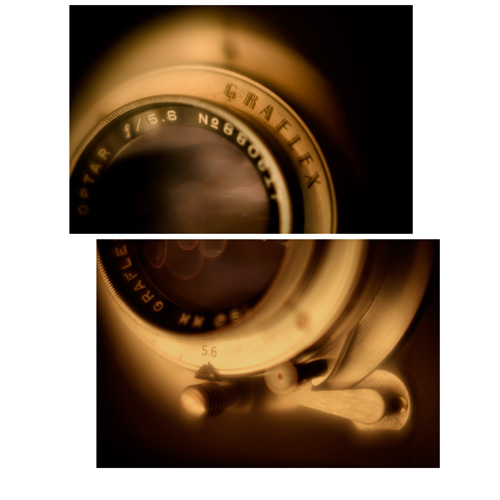NO ZOOM LENS

I confess I’m an old school photographer, even though I’ve been doing 99% of my work digitally since 1994. I shoot at film ISOs. I shoot at manual film advance frame rates. I love my tripod. Half my cameras don’t autofocus. And I shoot with prime lenses.
I have always owned and used zoom lenses for commercial assignments. For years I avoided a 24-70mm zoom lens although I had a 70-200mm and 16-35mm, but eventually I ended up with the coveted ‘triumvirate’. They were a necessity, not a choice, for when I needed to be at a focal length not available as a prime – when the shot the client needed dictated the camera position and I needed the lens to compensate. It was my concession to being professional – to being able to make any client’s picture no matter what.
For personal work (and these days more and more of my commercial work is ‘personal’) I carry a rangefinder camera with me all the time, and use it for almost all of my normal-to-wide angle shooting. The bright lines for the 35mm and 50mm lenses have become etched into my cornea, and I’m working on the 28mm. There’s a heads-up display framing everything I see – I can’t help it.
PRIME LENSES WORK
Last year on an assignment with a 24-70, I did a test. I shot at a number of in-between focal lengths and found that the images that worked best were shot at the prime focal markers on the lens, not at 23mm or 46mm or 67mm. So in my recent DSLR brand shift, I’ve eschewed zooms and built this new kit 100% with primes – 20mm, 35mm, 50mm, 105mm, 180mm. Although occasionally I find this a little scary on a commercial shoot, I’m totally at ease with fixed lenses. I use less equipment to make better pictures. I avoid big, heavy, conversation-starter tools so I can disappear better.
I am working simply to capture more complexity – in my subjects and in my compositions.
SLOW CRAPPY ZOOMS
Significantly for new photographers today, the 50mm “normal” lens packaged with film SLR bodies back in the 20th century has been replaced by the slow crappy zoom. Most photographers who buy a camera-with-lens kit don’t know about lenses yet. They don’t understand f-stops; that cameras need light to autofocus; that there are compromises when shooting at the high ISOs mandated by a slow zoom. They often don’t know what a “prime lens” is, and they haven’t yet learned how the choice of focal length impacts their image. They use the zoom to crop their snapshot in the camera, and miss the much more significant part – how different lenses draw the world.
Zooms outnumber primes in the major camera brand lens lines. They represent that unfortunate bi-product of the digital revolution – multi-tasking – and the novice’s quest for a do-everything picture-machine that fits in your pocket, makes building-sized prints and shoots pictures where there’s no light. Photographers complain about weight, about having to carry things, and about forgetting that thing they really needed. They want to work small, expect big results and want every option available so they don’t have to plan (oops, I mean so they can be spontaneous and ‘creative’). There is no such device, but the equipment manufacturers happily feed the myth with slower zooms, image stabilization (which does NOT make the same picture as a faster lens), distortion correction software and plastic materials recognizing that there are profits to be made along the path to prime lens enlightenment.
This is not to say that, in the hands of a knowledgeable user, the zoom is not an invaluable tool (sometimes only a 38mm lens will do), but for all but the most dedicated new photographer it delays true understanding with an illusion – a cropping device masquerading as intentional lens selection.
TRY IT, YOU’LL LIKE IT
Canon and Nikon, and most of the big brands, make a 50mm prime lens with a relatively fast aperture (f1.8 or f2.0) for about $100. On a full-frame camera, that’s a “normal” lens. For crop-sensors it’s a portrait telephoto. If you want a “normal” for a crop-sensor you need a 28mm lens which might be a little more expensive and not quite as fast. Used lenses are usually less.
That simple lens will allow lower ISOs, faster shutter speeds and render more beautiful out-of-focus areas in your images (I really HATE that “b” word for this effect) than any zoom at a fraction of the weight, size and expense. You’ll carry your camera more, engage with your subjects differently, and launch the gestation of the first focal length imprint on your pre-visualization cortex!
Ok – I made that last part up (I think).
SAVE THE PRIMES
Or how about this – if we don’t buy prime lenses they’ll go extinct. It happens. Kodachrome, the ‘real’ Tri-X, Polapan, Rodinal, Panatomic-X, flash bulbs…
Can you afford to spend a hundred bucks to revolutionize your photography? Can you afford not to?
© 2013 Mark Berndt | All Rights Reserved



